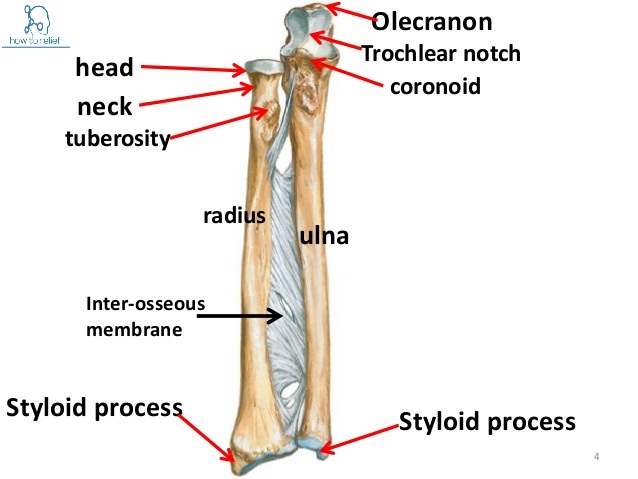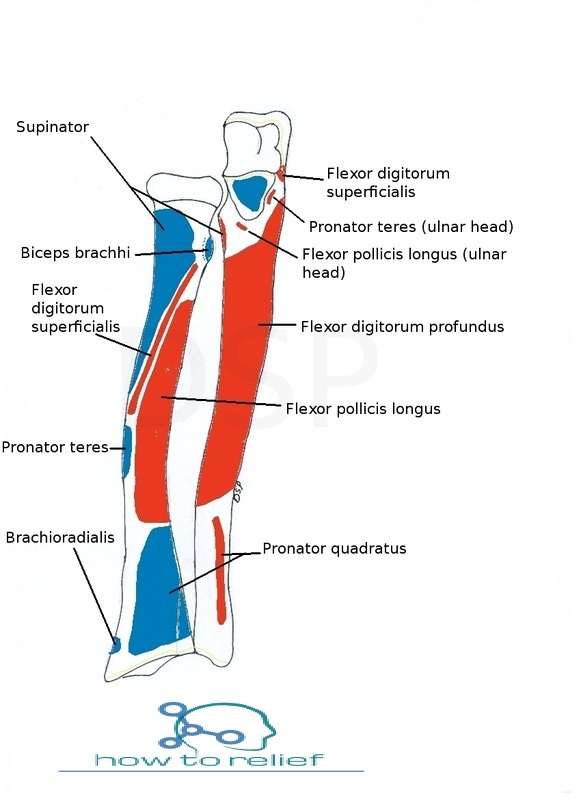The ulna is a long bone in the forearm. When in the anatomical position, it is found on the medial side of the forearm. It goes parallel to the radius, and the ulna is the larger and longer of the two. The ulna acts as the stabilizing bone, with the radius rotating to produce movement supination & pronation.
Proximally, the ulna articulates among the humerus at the elbow joint. Distally, the ulna articulates by the radius, forming the distal radio-ulnar joint. If the ulna breaks, it most frequently occurs at either the point where the radius and ulna serve as a joint or where the ulna creates a joint with the carpal bones. Ulnar fractures induce severe pain, struggle to move the joint, and even develop deformity of the arm if the fracture is compound.
Proximal End of the Ulna
The proximal end of the ulna articulates by trochlea of the humerus. To facilitate movement at the elbow joint.Landmarks of the proximal ulna are the coronoid process, olecranon, trochlear notch, radial notch and the ulnar tuberosity.
Coronoid process –This elevation of bone projects outwards anteriorly, producing part of the trochlear notch.
Olecranon –A large prominence of bone that extends proximally, making part of trochlear notch. It can be palpated as the ‘tip’ of the elbow. The muscle of triceps brachii attaches to its superior surface.
Trochlear notch –Formed by the olecranon and coronoid process. It is wrench shaped and articulates among the trochlea of the humerus.

Tuberosity of ulna –A roughening immediately distal of the coronoid process. It is wherever the brachialis muscle attaches.
Radial notch –Located on the lateral surface of the trochlear notch, this area articulates among the head of the radius.

Shaft of the Ulna
The shaft of the ulna is triangular in shape, with three borders and three surfaces. As it travels distally, it shrinks in width.
The surfaces are:
Posterior – Site of attachment for many muscles.
Anterior – Site of attachment for the pronator quadratus muscle distally.
Medial – Unremarkable.
The borders are:
Interosseous– Site of attachment for the interosseous membrane, which spans the distance between the two forearm bones.
Posterior– Palpable along the entire length of the forearm posteriorly
Anterior– Unremarkable.
Distal End of the Ulna
The distal end of the ulna is greatly smaller in diameter than the proximal end. It is mostly unremarkable, terminating in a rounded head, with distal projection – the ulnar styloid process. The head articulates among the ulnar notch of the radius to make the distal radio-ulnar joint.

